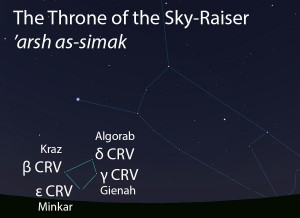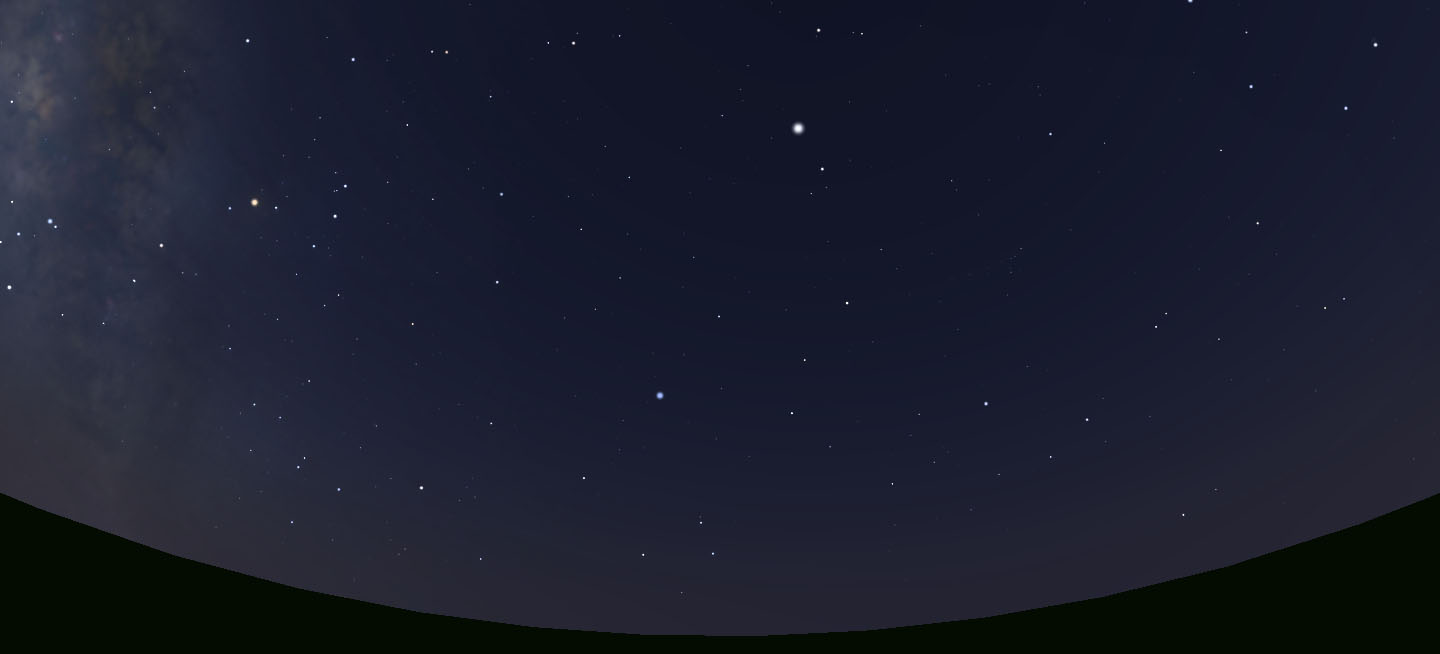Star Names
The Throne of the Sky-Raiser (‘arsh as-simak)
The Throne of the Sky-Raiser is part of the Two Sky-Raisers (as-simakan) celestial complex. In ancient Arabic, the term simak indicated something that was used to raise something else high up. When the Two Sky-Raisers reached the midpoint of their travels across the night sky, the uppermost one was almost at the zenith, right over your head, and the lower Sky-Raiser was almost directly below it, about halfway up the sky. The Two Sky-Raisers were the pillars that held up the canopy of the heavens. The Throne is located below the southern one of the Two Sky-Raisers, the Unarmed Sky-Raiser.

The Throne of the Sky-Raiser (‘arsh as-simak) as it appears setting in the west about 45 minutes before sunrise in mid-March. Sky simulations made with Stellarium.
Appearance
A grouping of four moderately bright stars that is arranged in a quadrilateral shape.
Modern Identification
β CRV (Kraz), yellow giant star, magnitude 2.7
δ CRV (Algorab), white double star, magnitudes 3.0 and 8.4
γ CRV (Gienah), blue-white star, magnitude 2.6
ε CRV (Minkar), yellow star, magnitude 3.0
Timing
The four stars of the Throne of the Sky-Raiser set over the course of a week and a half, beginning just before the setting of the Mane (az-zubra). Ibn Qutayba (d. 879 CE) reported that the Mane was said to rise on the morning of August 28 and set on the morning of February 26. On account of the precession of the equinoxes, today we can expect to observe the Throne setting in mid to late April, and rising in mid to late October, as seen from the latitude of Tucson. (See How to Observe on the About page for more on this topic.)
Rain Stars
The Throne of the Sky-Raiser does not figure in the calendar of the rains stars.
Lunar Stations
The Throne of the Sky-Raiser is not one of the lunar stations.
Related Stars and Celestial Complexes
The Throne of the Sky-Raiser is part of the Sky-Raisers (as-simakan, السماكان) folkloric celestial complex.
Related Blog Posts
The Setting of the Arabian Sky-Raisers

